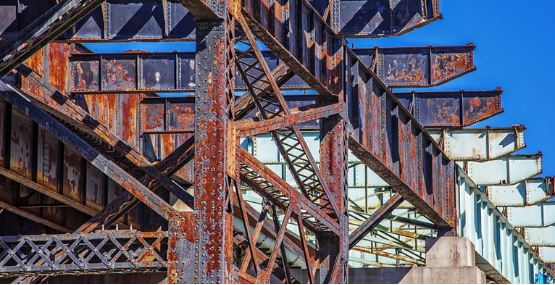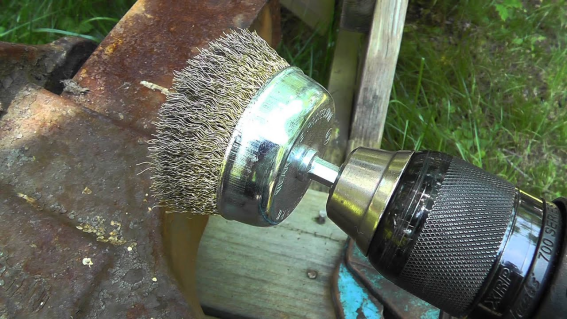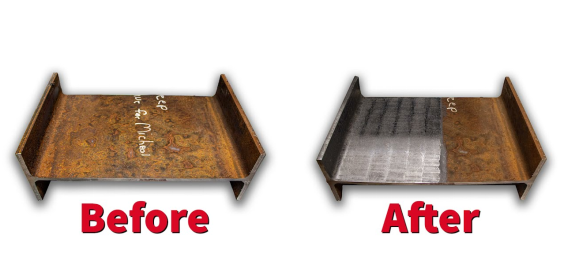Steel beams are indispensable components in the construction industry, known for their exceptional strength, durability, and versatility. However, prolonged exposure to moisture and environmental elements can lead to the development of rust on these crucial structural elements. Rust compromises the integrity and aesthetics of steel beams, making proper maintenance and rust removal essential to ensure their longevity and safety. In this comprehensive guide, we will tell how to remove rust from steel beams, ranging from meticulous surface preparation to advanced methods used by experts in the field.
Prioritizing Safety
Safety should be the paramount concern before commencing any rust removal work. It is imperative to adhere to the following safety precautions:
- Personal Protective Equipment (PPE): Wear appropriate PPE, including safety goggles, gloves, and a respirator, to protect against chemical exposure and airborne rust particles.
- Ventilation: Ensure sufficient ventilation in the work area, particularly when utilizing chemical-based rust removers.
- Work Area Preparation: Clear the vicinity surrounding the steel beams to create ample workspace and minimize potential hazards.
- Professional Inspection: Conduct a comprehensive inspection of the steel beams to assess the extent of rust damage. In cases of significant structural deterioration, it is advisable to seek consultation from a qualified engineer before proceeding with the removal process.
Utilizing the Right Tools and Materials
The efficiency of rust removal relies heavily on using the appropriate tools and materials. The following are essential items for a professional rust removal process:
- Wire Brushes and Wheels:Employ wire brushes or wire wheel attachments for drills to manually eliminate loose rust and scale. Various types of wire brushes offer specific applications:
- Crimped Wire Brush: Ideal for light to medium-duty rust removal and surface cleaning, delivering a softer brushing action suitable for delicate surfaces.
- Knotted Wire Brush: Highly effective for heavy-duty rust removal and surface preparation, specifically designed for stubborn rust and scale.
- Twisted Wire Wheel:Large wire brushes, designed for power tools like drills and angle grinders, expedite rust removal over larger surface areas.
- Wire Cup Brush: Employed for reaching corners and crevices on steel beams, making it invaluable for rust removal in hard-to-reach areas.
- Chemical Rust Removers:Commercial rust removers, often phosphoric acid-based, are effective in dissolving rust. They complement wire brushing, facilitating the breakdown of rust particles and easing their removal. Ideal for intricate designs and areas challenging to reach with wire brushes.
- Sandpaper: Select sandpaper with various grit sizes, each serving a distinct purpose:
- Coarse Grit Sandpaper(40 to 80): For heavy rust removal and surface shaping, removing thick rust and stubborn deposits.
- Medium Grit Sandpaper(100 to 150): For general rust removal and surface smoothening after using coarser grits, refining the surface for further treatments.
- Fine Grit Sandpaper(180 to 240): For fine-tuning the surface after using medium grits, removing smaller imperfections for a smoother finish.
- Extra Fine Grit Sandpaper(320 to 400): For final smoothing and preparing the surface for priming and painting, eliminating any remaining small rust particles.
- Rust Converters:These chemical compounds transform residual rust into a stable compound, preparing the surface for priming and painting. Essential when minimal rust remains after wire brushing and chemical rust removal.
- Rust-Inhibiting Primer: After rust removal, applying a rust-inhibiting primer establishes a protective barrier, enhancing resistance to moisture and environmental factors that induce rust. Crucial for the steel beam’s longevity after rust removal.
- High-Quality Paint:Following rust removal and priming, select a top-tier paint specifically designed for metal surfaces. The paint acts as the final protective layer, guarding the steel beams against future rust formation and elevating their visual appeal.
- Abrasive Blasting Equipment: For extensive rust removal and large-scale projects, professionals may utilize abrasive blasting equipment. This process involves propelling abrasive particles, such as sand or steel shot, at high pressure onto the rusted surface. Abrasive blasting effectively removes rust, old paint, and other contaminants, preparing the steel beams for priming and painting. Due to the specialized equipment and expertise required, this method is best suited for professional use.
- Angle Grinder with Wire Cup Brush Attachment:An angle grinder equipped with a wire cup brush attachment is a formidable tool for rust removal. The rotating wire bristles expedite rust removal, particularly in hard-to-reach areas. Skilled handling of this tool is crucial to prevent damage to the steel beams or injury.
Implementing the Professional Rust Removal Process
Step 1: Thorough Surface Cleaning
Before starting the rust removal process, the steel beams must be thoroughly cleaned to remove any loose debris, dirt, or grease. Use a wire brush or a stiff bristle brush along with a mild detergent or degreaser to scrub the surface. Rinse the beams with clean water and let them dry completely before proceeding to the next step. This initial cleaning ensures better adhesion of the rust removal products and helps in identifying the extent of rust damage.
Step 2: Mechanical Rust Removal
Begin by using wire brushes or wire wheel attachments for drills to manually remove loose rust and scale from the steel beams. Start with a crimped wire brush for light to medium-duty rust removal and then switch to a knotted wire brush for heavy-duty rust and stubborn deposits. Pay close attention to corners and crevices, using a wire cup brush to reach the areas that are difficult to access.
Step 3: Chemical Rust Removal
Chemical rust removers can complement wire brushing, especially for intricate designs and hard-to-reach areas. Apply a commercial rust remover, typically based on phosphoric acid, to the rusted areas. Follow the manufacturer’s instructions carefully, as some products may require dilution or specific application techniques. After applying the rust remover, allow it to sit for the recommended time to dissolve the rust effectively.
Step 4: Rust Converter Application
Once the majority of the rust has been removed, and the surface has been cleaned, apply a rust converter to the remaining rusted areas. The rust converter chemically reacts with the rust, transforming it into a stable compound that prepares the surface for priming and painting. This step ensures that any residual rust is neutralized and prevents future rust formation.
Step 5: Surface Smoothening
Use sandpaper with various grit sizes to smoothen the surface of the steel beams. Start with a coarse grit sandpaper to remove any remaining stubborn rust and imperfections. Gradually progress to medium grit sandpaper, then fine grit sandpaper, and finally extra fine grit sandpaper for a smooth finish. The smoother the surface, the better the adhesion of the primer and paint.
Step 6: Apply Rust-Inhibiting Primer
After completing the surface smoothening process, it’s time to apply a rust-inhibiting primer to the steel beams. The primer creates a protective barrier that enhances the beams’ resistance to moisture and environmental factors that can lead to rust formation. Follow the manufacturer’s instructions for proper application and drying times.
Step 7: Paint the Steel Beams
Once the primer has dried, carefully apply a high-quality paint specifically designed for metal surfaces. The paint serves as the final protective layer, safeguarding the steel beams against future rust and providing a visually appealing finish. Choose paint that is compatible with the primer used, and apply it evenly using a brush, roller, or spray gun.
Step 8: Regular Maintenance
To prolong the life of the steel beams and maintain their rust-free condition, establish a regular maintenance schedule. Inspect the beams periodically for signs of rust or damage, and promptly address any issues that arise. Cleaning the beams regularly with a mild detergent can help prevent the buildup of dirt and debris that might contribute to rust formation.
Employing Advanced Rust Removal Techniques
For severe rusting or substantial projects, professionals may employ advanced rust removal techniques, such as abrasive blasting or specialized power tools like angle grinders with wire cup brushes. Due to the potential for steel beam damage and the risk of injury, these methods necessitate expert handling and are best suited for professional application.
Conclusion
Maintaining the structural integrity of steel beams necessitates effective rust removal techniques. By adhering to professional methods, from meticulous surface preparation to advanced rust removal procedures, one can safeguard these essential construction elements and extend their lifespan significantly. Prioritizing safety, using the right tools and materials, and executing the rust removal process meticulously ensures that steel beams remain reliable, resilient, and visually appealing for many years to come.



